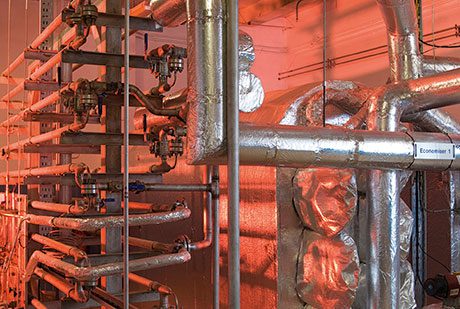The wastewater industry continues to lead the way in the adoption of anaerobic digestion as a sustainable treatment technology for sewage sludge. However, John O’Regan says few plants are making the most of the clear advantages that co-digestion has to offer.
IN the face of social and political pressure to reduce the environmental impact of waste disposal, anaerobic digestion (AD) is becoming an increasingly popular solution in the wastewater sector. What’s more, with the government continuing its drive to implement legislation and incentives for renewable energy production, it provides a greener and more financially lucrative way forward.
With such clear economical and environmental benefits, the question remains: why are professionals not making the most of unused capacity in their digesters by adding domestic waste and/or farmyard slurry to the mix? Co-digestion not only opens to the door to wider financial returns and an additional gate fee, it produces increased volumes of biogas. This extra biogas can be used to generate renewable electricity and heat, reducing a plant’s dependence on fossil fuel and has potential to be fed back into the National Grid. It also offers an alternative to food waste disposal in landfill, which is not only expensive but can potentially generate undesired, harmful methane as the waste decomposes underground.
So it would seem co-digestion does genuinely present an attractive commercial growth opportunity for individual wastewater treatment plants, whilst helping contribute towards the UK’s legally binding carbon reduction targets. However, the marked level of apprehension amongst industry professionals remains and this is due to a widely disputed problem – how do you securely manage the increased levels of digestate?
With the burden of liability falling to the sludge producer, these concerns are heightened by a backdrop of obstacles surrounding current disposal methods. The increasing expense of practices such as landfill and land application is matched with diminishing availability of useable land. There is also growing public and legal opposition and other liability implications associated with spreading solids that contain unknown and potentially toxic contaminants on agricultural land. These issues have meant that industry is still seeking an injection of confidence to help drive widespread uptake.

Despite these obstacles, there is a solution that can help unlock the advantages of co-digestion without the liability burdens and extra costs. The way we treat digestate is set to change following the development of a world-first technology that delivers complete destruction of co-digested waste in a sustainable, safe and energy-positive process.
AquaCritox technology uses super critical water oxidation (SCWO) to deliver 99.99%+ destruction of the organic materials present in both digested and undigested sludge. In a single-step process, the technology subjects the sludge to high temperature and pressure levels (374°C and 221 bar respectively), converting all organic materials present into CO2, nitrogen and clean water. The process is completely odourless with no hazardous emissions.
It also generates thermal energy, allowing anaerobic digesters to operate at thermophilic temperature. This is a key breakthrough, as digesters operating in thermophilic mode typically require reduced hydraulic retention times, making it is possible to process increased organic loads without the need to increase digester capacity. It also allows for the generation of more biogas, which can be improved and sold to the national grid or used to power a gas engine. What’s more, should the AD be offline, AquaCritox can continue to process third party material directly, ensuring contracts are always honoured.
AquaCritox provides a unique solution and peace of mind for those looking to make the most of the advantages co-digestion has to offer. It guarantees the ability to take in third party material whilst eliminating any issues surrounding the process, providing continued operation regardless of digester performance, legislation, weather or any farming practice changes. The technology not only allows plants to significantly increase capacity and biogas production, it also reduces their carbon footprint, costs and over-all environmental impact, making co-digestion a truly commercially and viable prospect for the future.
John O’Regan is chief executive officer at SCFI.






